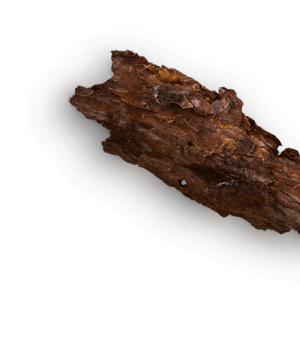What is a reliable method for a scientific inquiry?
Use the criteria to plan, select, and use the most reliable method for a scientific inquiry.

Overview
In this activity, students work collaboratively to use the criteria and a thinking strategy to select a reliable method for a scientific inquiry assessing the impact of agricultural fertilizers on a local body of water. These thinking tools can be used by students to select reliable methods for inquiry in multiple contexts. While this activity uses examples related to water quality, other examples could be used to help nurture the competency of planning and conducting.
Instructions
What you'll need
- “Determining reliable methods for scientific inquiry” worksheet
- “Rating the reliability of methods for scientific inquiry” worksheet
- “Selecting a reliable method for scientific inquiry” worksheet
- “Assessing my ability to select a reliable method for scientific inquiry” rubric
- Begin this activity by organizing your students into groups and provide each student with a copy of the “Determining reliable methods for scientific inquiry” worksheet. Invite your students to make an initial decision: Which method of determining the pH of water is the most reliable? Ask groups to think about why they made their decision and note their reasoning.
- Encourage groups to share their decisions and thinking with the class. Ask your students to think about what makes a method reliable and suggest the qualities of a reliable method. Together with your students co-create, or share, the following criteria for a reliable method. (Note that not all criteria may be applicable for every situation.)
- Collects relevant scientific data
- Collects accurate scientific data
- Feasible given time and resources
- Ethical
- Safe
- Provide each student with a copy of the “Rating the reliability of methods for scientific inquiry” worksheet. Ask groups to revisit their initial decisions and now apply the applicable criteria for a reliable method: Have their decisions changed or stayed the same? Encourage students to revise the given methods to better meet the criteria if needed.
- Remind your students that each method can have its own strengths when conducting a scientific inquiry. Each method can play an important role and methods can often complement each other. Invite each group to consider possible method combinations as they use their ratings and revisions to determine the most reliable method.
- Explain to your students that they are going to practice using the criteria as they select a reliable method for assessing the impact of agricultural land-based fertilizers on a local body of water. Provide your students with a copy of the “Selecting a reliable method for scientific inquiry” worksheet. This worksheet can be used in other contexts as well.
- Invite your students to work collaboratively as they:
- Think about what they already know about the inquiry topic. You might prompt student thinking by asking:
- How can land-based fertilizers affect levels of certain chemicals/nutrients in nearby bodies of water?
- How do high nutrient levels contribute to the process of eutrophication?
- What might you see in ponds with high levels of fertilizer contamination?
- List related ideas that might be useful in determining a reliable method for the inquiry.
- Instruct groups to suggest and record three methods for assessing the impact of agricultural fertilizers on a local body of water and rate each method based on the applicable criteria for a reliable method. Encourage your students to suggest methods using quantitative chemical measures, qualitative observations, and research. Students can then revise their methods to better fit the criteria. You might remind your students that there are many methods that can be used to test for the effects of fertilizers on water including:
- Quantitative chemical measures of phosphorous, nitrates, dissolved oxygen
- Qualitative observations and quantitative measures of weed growth and algae blooms
- Research
- Instruct each group to consider possible combinations of methods to increase reliability as they work together to use their ratings and revisions to select the most reliable method. Encourage groups to share their methods and thinking with the class.
- Conclude this activity by inviting your students to suggest other contexts where these thinking tools, especially the criteria, might be useful.
Modify or extend this activity
Modification
- In Step 5, consider selecting a local body of water near agricultural land for your students to focus on.
- In Step 6, consider discussing the process of eutrophication with your class to help them build knowledge of the effects of excess nitrogen and phosphorous in water. This video might be helpful.
Extension
Select a local body of water near agricultural land where students can use their selected methods to conduct the inquiry. At the conclusion of the study, you might have students consider their obtained results as they revisit the reliability ratings for their chosen method.
Curriculum Fit
Environmental Sciences 12
Big idea
- Human actions affect the quality of water and its ability to sustain life
Content
- Water quality parameters and bioindicators
Curricular competency
Planning and conducting
- Collaboratively and individually plan, select, and use appropriate investigation methods, including field work and lab experiments, to collect reliable data (qualitative and quantitative)
Assessments
Throughout the activity consider how well students:
- Contribute to respectful group discussion
- Use the criteria to select a reliable method for inquiry
Guide students in using the “Assessing my ability to select a reliable method for scientific inquiry” rubric during the activity.
Teaching Notes
This activity assumes a working knowledge of the effects of agricultural fertilizers on nearby bodies of water, including its effect on levels of phosphorous, nitrogen, dissolved oxygen, and the effects of eutrophication on plant and animal species.
To learn more about the effects of agricultural fertilizers on nearby bodies of water, check out these resources:








